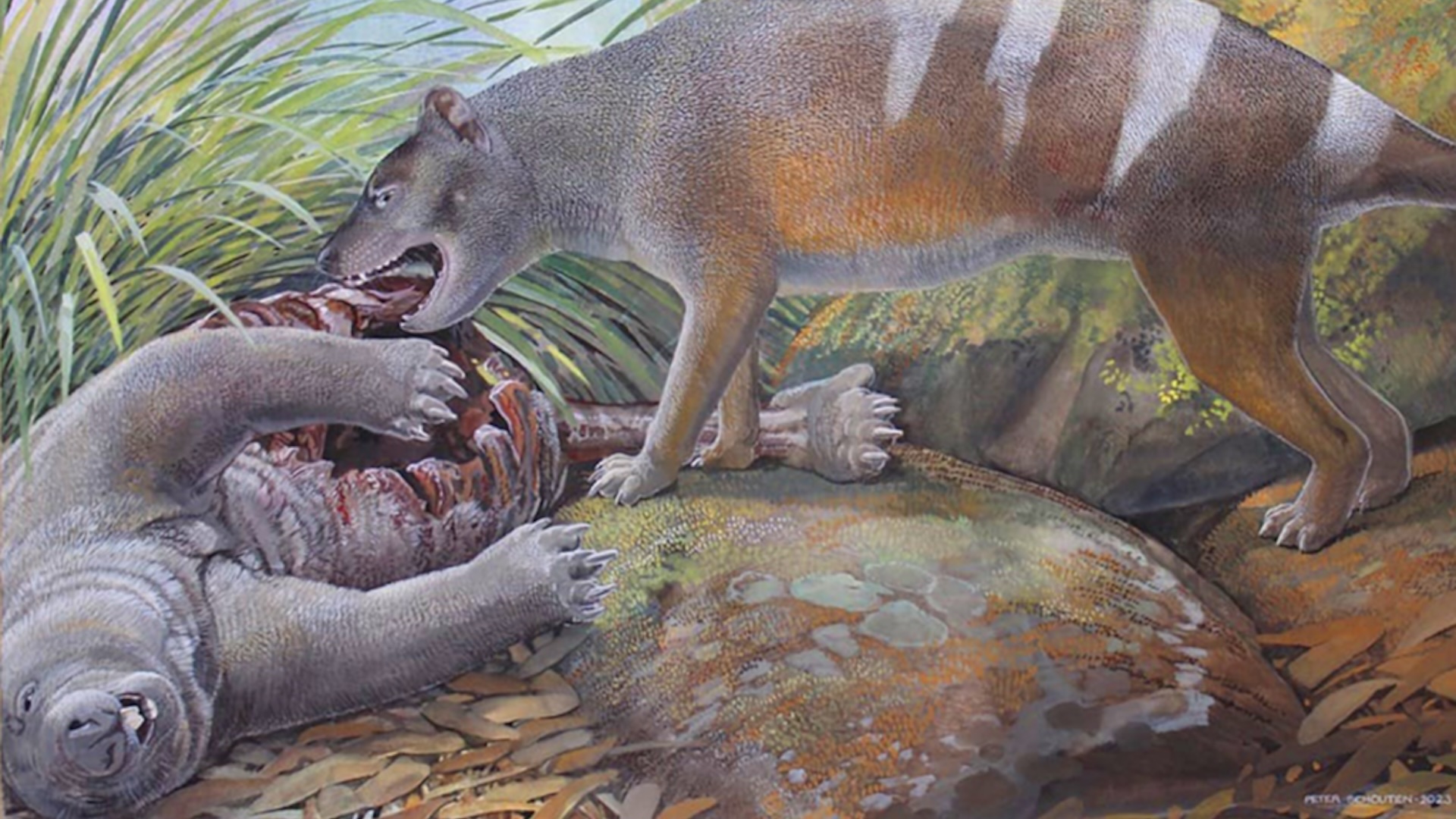
Scientists have identified a "bone-crushing" ancestor of the Tasmanian tiger.
The bone crusher — along with two other newfound Tasmanian tiger ancestors — roamed Australia from 25 million to 23 million years ago, making them the oldest known members of the Thylacinidae family ever discovered.
The pouched carnivores, described Sept. 7 in the Journal of Vertebrate Paleontology, are redefining scientists' understanding of the predators that dominated the Australian landscape during the late Oligocene (33.9 million to 23 million years ago).
"The once suggested idea that Australia was dominated by reptilian carnivores during these 25 million-year-long intervals is steadily being dismantled as the fossil record of marsupial carnivores, such as these new thylacinids, increases with each new discovery," Timothy Churchill, a doctoral student at the University of New South Wales and lead author of the study, said in a statement.
The newfound species, which were found in a fossil bed in the Riversleigh World Heritage Area in northern Australia, are related to the Tasmanian tiger (Thylacinus cynocephalus). Also known as the thylacine, it was the last surviving member of its lineage. It once lived across the Australian mainland, Tasmania and New Guinea, but by around 2,000 years ago, it was found only in Tasmania.
The thylacine looked like a striped dog, carried its young in a pouch like its kangaroo cousins, and hunted kangaroos, small birds and rodents. It was driven to extinction last century by human hunting and habitat loss.
Although scientists have found other early thylacine relatives, until now only one other known thylacine relative dated to the late Oligocene
Badjcinus timfaulkneri, a racoon-size animal that weighed no more than 25 pounds (11 kilograms), used its extremely thick jawbone to crush and eat the bones and teeth of its prey. The molars of this species were found in a 25 million-year-old fossil deposit, making it the oldest unambiguous evidence of a thylacine ever found.
Another species, Ngamalacinus nigelmarveni, was approximately 11 pounds (5.1 kg) — about the size of a red fox (Vulpes vulpes). Long blades on its lower molars allowed it to pierce and shred meat. These V-shaped teeth suggest that N. nigelmarveni was highly carnivorous — more than other small thylacinids, according to the statement.
The smallest of the newfound species, Nimbacinus peterbridgei, is likely the closest direct relative of the modern thylacine, despite being the size of a Maltese. This forest generalist likely would have hunted small prey like lizards and birds.
All three species were named after Australian scientists and conservationists.
The differences in these thylacine relatives' teeths suggest there were multiple ecological niches carnivores could exploit, leading to their diversification.
"All but one of these lineages, the one that led to the modern Thylacine, became extinct around 8 million years ago," Churchill said.
The last known thylacine died in the Hobart Zoo in 1936, just a few months after the species received protected status.







